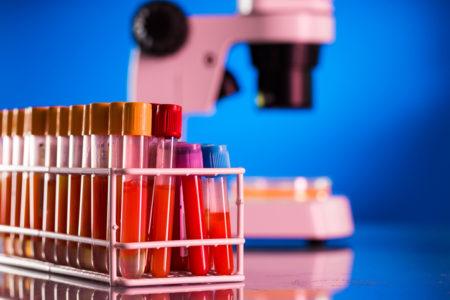What is a complete blood count?
What is a complete blood count? What can this test reveal? The blood count or complete blood count is a test that is highly requested by physicians since a blood count analyzes different blood cells such as red blood cells, whites, or platelets. Next, we tell you more about the blood count and the values analyzed in this test.
What is a complete blood count?
We all know that the blood of a living being is composed of a liquid tissue that contains a varied cellular component , all encased in a vascular system composed of arteries and veins in which the It circulates without interruption.

The hemochromocitometric term (or emogram) indicates the quantitative and qualitative determination of the various cellular components and the concentration of hemoglobin contained in red blood cells. We know in fact that it is the most requested examination among the analytical determinations by the doctor and in fact if you have ever had any discomfort or do not know exactly what happens to you, surely the first thing the doctor has done has been to ask for a blood test or hemogram.
Why is it necessary?
In this way, we can say that the blood count is very useful because > our cell component undergoes numerous modifications during various diseases, so it becomes a very important diagnostic support for the control of various diseases.
How it works
With the media available for the analysis centers, the exam is quick and easy. The sample is taken from a vein in the arm , without the previous fasting being necessary, extracting about 5 cubic centimeters of blood.All these data, in the reports, are often indicated by acronyms that generate interpretative difficulties in some patients.
We can explain in detail how these three cell lines present in the blood
The red series
- It consists of the so-called red blood cells (RBC) whose main function is to transport oxygen from the lungs to all cells and tissues of the body.
The hemogram will quantify:
- The number of red blood cells
- Hemoglobin (HGB), molecule that is part of the red blood cell.
- The hematocrit (measures the percentage of red blood cells in the total volume of blood, and also the erythrocyte indexes (reports on the size and concentration of hemoglobin in red blood cells) These values res are varied depending on age and sex.
The white series
- Formed by white blood cells or leukocytes (WBC) , has as important functions the defense of the organism against infections and foreign substances.
- The blood count measures the white blood cell count in a total; and also the percentage of each type of leukocytes, increasing some decrease the others. The values will be variable taking into account the age.
- There are different types of leukocytes such as granulocytes, lymphocytes, monocytes, eosinophils and basophils.
The platelet series
- It consists of platelets or thrombocytes , they have a direct relationship with the blood coagulation processes. The hemogram counts the number of platelets and provides data on the size of the platelets. This count has variations according to age.

Values taken into account
The values of all these series may be shown in their acronyms, usually in English, so that for you to understand it better we can say that these would be the values taken into account:
- HB : Hemoglobin. Protein responsible for the red blood cell pigment capable of transporting oxygen.
- HT = Hematocrit . Ratio of red blood cells to plasma, expressed as a percentage.
- RBC = Red blood cells. Indicates the number of these components per unit of blood. A deficiency is called anemia, an excess is called polyglobulia or erythrocytosis
- WBC = White blood cells . Measured taking into account the number of these elements per cubic millimeter of blood, they have the function of activating immunological reactions and fighting infections. If they are lower than the standard value, we speak of leukopenia, if there are more, we are facing a leukocytosis. Other values are often specified for the various types of white blood cells (leukocyte formula), namely neutrophils, eosinophils, basophils, lymphocytes and monocytes;
- PLT = Platelets. The amount of platelets in the blood per cubic millimeter.The doctor can keep track of these patients by taking periodic blood counts to see the progress of their white blood cells.
- A low number of red blood cells or having red hemoglobin may indicate > anemia that may be caused by a variety of causes.
- A high number of red blood cells or hemoglobin may indicate a disease of the cord or low levels of oxygen in blood (hypoxia).
- A high platelet count can reveal serious inflammation problems or disorders in the bone marrow.
- A low count of platelets can cause prolonged bleeding or other medical disorders.
As we mentioned, it is the doctor who must interpret and read the result of your blood count, but after explained, you yourself will be able to read the values and counts that have been obtained in the analytical, and know if being ale rta or not before a possible illness or disease among those indicated.


